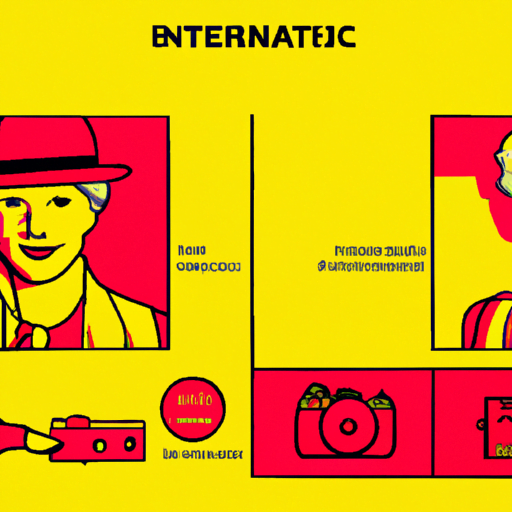
-
Table of Contents
Interactive Infographics: Engaging Users in New Ways

Infographics have become a popular way to present complex information in a visually appealing and easily understandable format. They have the power to convey data, statistics, and concepts in a concise and engaging manner. However, traditional infographics are static and limited in their ability to actively involve users. This is where interactive infographics come into play. By incorporating interactive elements, these infographics take user engagement to a whole new level.
What are Interactive Infographics?
Interactive infographics are dynamic and user-driven visual representations of information. Unlike static infographics, interactive infographics allow users to actively engage with the content, explore different data points, and interact with various elements. They often include features such as clickable buttons, hover effects, animations, and even interactive quizzes or games.
These infographics are typically created using HTML, CSS, and JavaScript, making them compatible with various devices and platforms. They can be embedded on websites, shared on social media, or used in presentations to enhance the overall user experience.
Benefits of Interactive Infographics
1. Enhanced User Engagement: Interactive infographics captivate users by allowing them to interact with the content. This hands-on experience keeps users engaged for longer periods, increasing the chances of them absorbing and retaining the information presented.
2. Improved Data Exploration: Interactive infographics enable users to explore data in a more personalized way. They can choose which data points to focus on, zoom in on specific details, and compare different variables. This level of interactivity empowers users to gain deeper insights and make connections that may not be immediately apparent in static infographics.
3. Increased Information Retention: Studies have shown that interactive content leads to better information retention compared to static content. When users actively participate in the learning process, they are more likely to remember the information presented. Interactive infographics provide an immersive experience that enhances memory recall and understanding.
4. Higher Shareability: Interactive infographics are highly shareable due to their engaging nature. Users are more likely to share content that they find interesting and interactive. This can lead to increased brand exposure, website traffic, and social media reach.
Examples of Interactive Infographics
1. The New York Times’ “How Different Groups Spend Their Day”: This interactive infographic allows users to explore how different demographic groups spend their time. Users can select different groups, such as men, women, or various age groups, and see how their daily activities compare. The interactive nature of the infographic makes it engaging and informative.
2. National Geographic’s “The World of Seven Billion”: This interactive infographic provides a visual representation of the world’s population growth. Users can explore different regions, view population statistics, and understand the impact of population growth on various aspects of life. The interactive elements make the information more accessible and memorable.
3. The Guardian’s “How the Ebola Outbreak Spread”: This interactive infographic allows users to track the spread of the Ebola virus outbreak in West Africa. Users can navigate through different timelines, view affected countries, and understand the progression of the disease. The interactive features help users grasp the severity and complexity of the situation.
Case Studies on the Effectiveness of Interactive Infographics
1. HubSpot’s Interactive Infographic on Email Marketing: HubSpot created an interactive infographic to educate users about email marketing best practices. The infographic allowed users to explore different sections, such as subject lines, email design, and segmentation. The interactive format increased user engagement and resulted in a 42% increase in time spent on the page compared to a static infographic.
2. Adobe’s Interactive Infographic on Creative Trends: Adobe developed an interactive infographic to showcase the latest creative trends in design, photography, and video. The infographic allowed users to interact with different sections, view examples, and learn about emerging trends. The interactive format increased user interaction by 65% compared to a static infographic.
Statistics on the Impact of Interactive Infographics
1. According to a study by Demand Metric, interactive content generates 2x more conversions than static content.
2. A survey conducted by Content Marketing Institute found that 79% of marketers agreed that interactive content enhances brand visibility and engagement.
3. Research by the Content Marketing Association revealed that interactive infographics have a 70% higher chance of being shared compared to static infographics.
Conclusion
Interactive infographics offer a powerful way to engage users and present information in a visually appealing and interactive format. By incorporating interactive elements, these infographics enhance user engagement, improve data exploration, increase information retention, and boost shareability. Examples from reputable sources and case studies demonstrate the effectiveness of interactive infographics in capturing and retaining user attention. As the demand for engaging and interactive content continues to rise, interactive infographics are becoming an essential tool for marketers, educators, and content creators. By leveraging the power of interactivity, these infographics have the potential to revolutionize the way information is presented and consumed.
